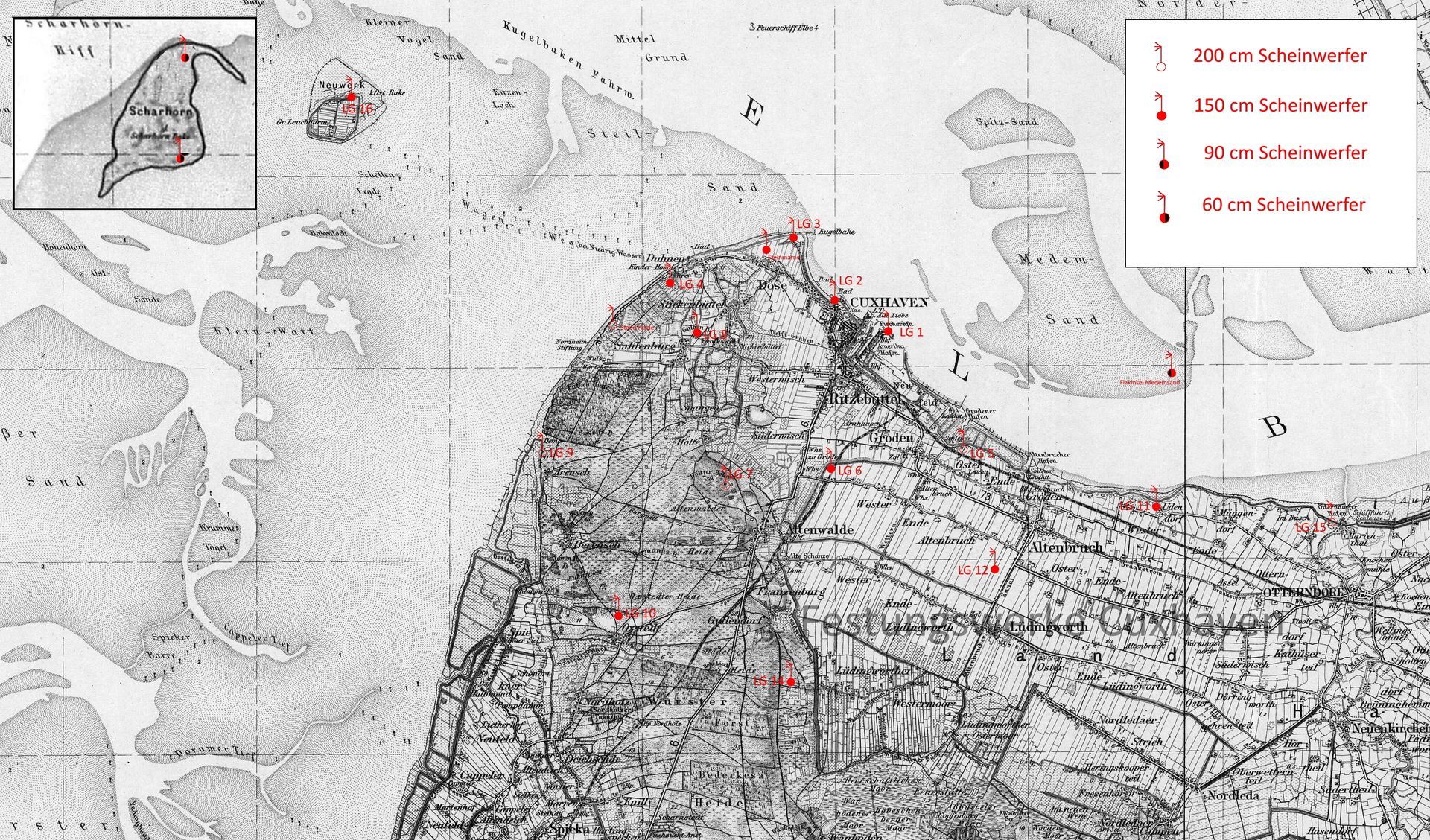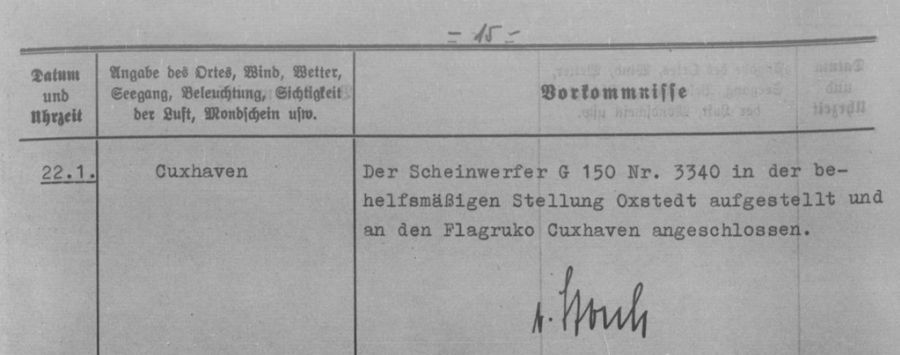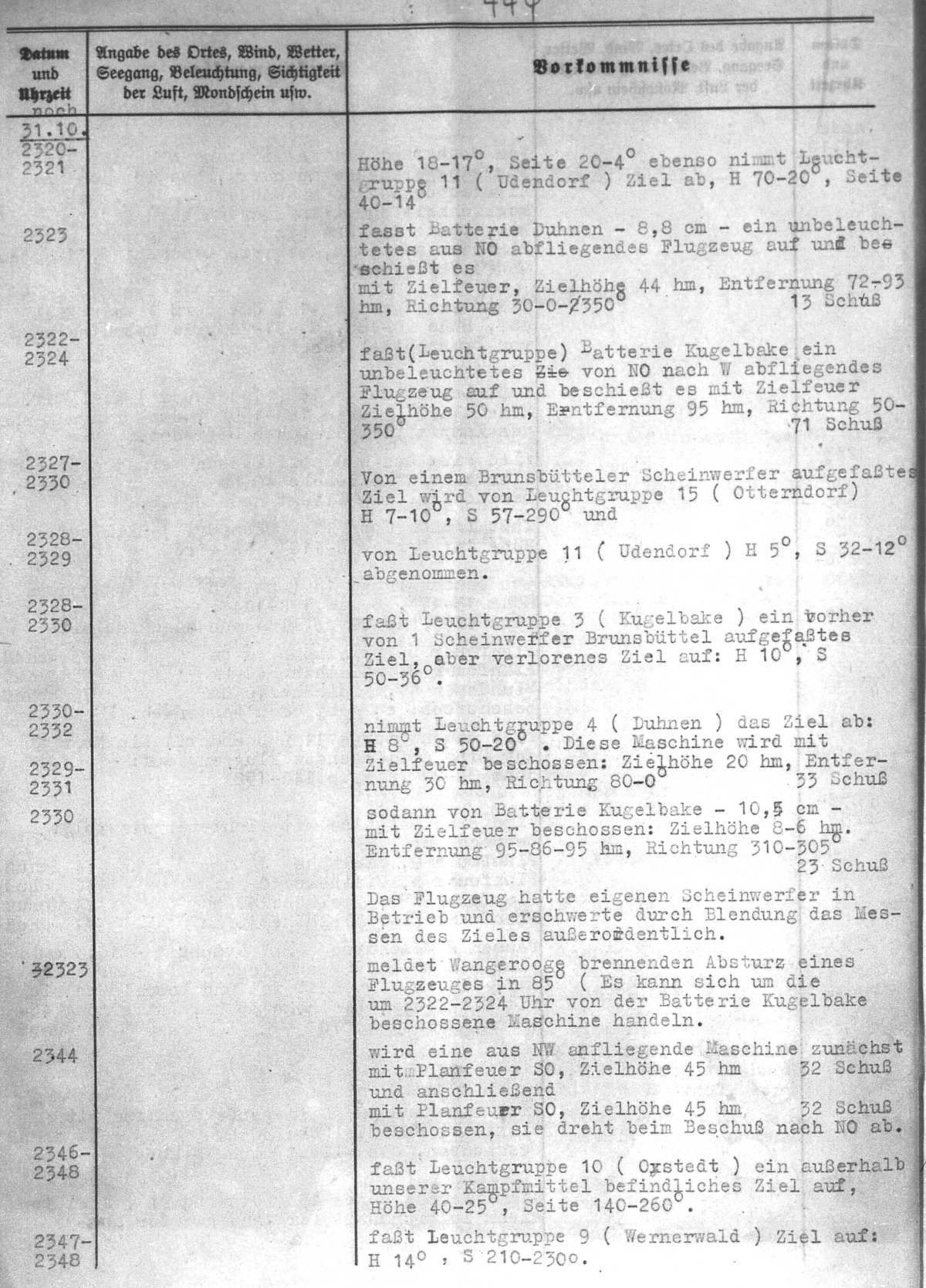
Another component of the air defense system at the time were the local anti-aircraft searchlight positions. At the beginning of the war, especially at night, it was only with these devices that it was possible to roughly locate approaching enemy aircraft in conjunction with a sound detection device. Once the light beam had caught a plane, other anti-aircraft searchlights fixed on the target so as not to lose it. The heavy anti-aircraft guns then usually fired barrages at high altitudes or the light anti-aircraft guns targeted low-flying aircraft at close range. As the war progressed, the sound detection devices were supplemented by radar measuring devices but never abolished. There were various models of light devices, stationary or mobile and with mirror diameters ranging from 60 cm to 200 cm. According to the war diaries of the Cuxhaven Naval Command, by 1942 there were already 12 anti-aircraft searchlight positions in the area around our town. However, it has not yet been possible to assign the corresponding searchlight numbers to all locations. Gerd Wildfang's book mentions a number of locations where contemporary witnesses can tell us with certainty where they were. There are also photos of the island of Neuwerk. If anti-aircraft searchlights were set up without weapons, their location was designated as searchlights with the corresponding location number, for example "Searchlight 4".From 1942 at the latest, a weapon was set up in the immediate vicinity to protect all searchlights against low-level attacks. This could be a machine gun or an anti-aircraft cannon with a light caliber of up to 4 cm. In addition, there was always a listening device in the immediate vicinity of the light source, which transmitted the recorded values directly to the searchlight via cable. The connection between the weapon, listening device and searchlight was called a lighting group with the corresponding location number, for example "Lighting Group 14".From mid-1942, most anti-aircraft searchlights were equipped with a permanently attached anti-aircraft aiming device. This was a light-sensitive pair of binoculars with an angled view for target tracking.
Vorgehensweise der Cuxhavener Leuchtgruppen im Gefechtsfall
The searchlights in the Cuxhaven urban area were deployed in an inner and outer defensive ring around the protected area, with an intermediate line covering the southern sector. The outer ring was located at a radial distance of eight kilometers from the edge of the defensive area, the inner ring on average two kilometers. Within each ring, the searchlights were about four kilometers apart. A total of sixteen locations were used, three of which were 200 cm in size and the rest were 150 cm in size.
Only four of the searchlight positions were equipped with radar locators (Freya) and were located on the coast along the area to be defended. The remaining locations were equipped with remote controls operated by naval artillerymen or AA helpers on the night glasses (Dunkelsuchgerät / DSG 40 or 41). Whether targets were located by radar, sound or visually, the lights were off until safe tracking was assured. This method eliminated the need to search with the permanent light beam and only caused sudden illumination of the target. The section, with its sixteen locations, consisted of four batteries, each with four searchlights. The battery command post was, whenever possible, located in a position equipped with 200 cm light and radar locating equipment. The searchlight at the battery headquarters served as the locating source and the three others as tracking lights. The targets to be illuminated were determined by a searchlight officer of the section and assigned to the batteries. After receiving the order to search for the enemy aircraft to be located, the battery conducted a radar search in the designated area. When the target was located, the battery headquarters light was switched on and the other three searchlights were ordered to also aim at the target and not lose it. When all four battery searchlights illuminated the target, the main light was switched off again and the radar was put back into search mode. The three tracking searchlights remained on the target until another position took over the target or it was out of range.Source: MB, US Army Report 08-1945

On March 3, 1940, the following searchlights were mentioned in the war reports during an air raid. Over time, more were added until 1945.
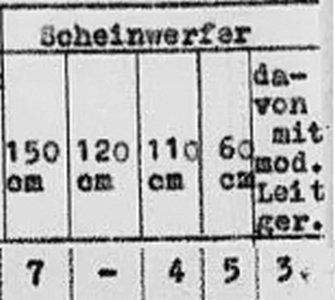
Report from the Commander of the Coastal Defense North Frisia (as of August 10, 1940). Number of anti-aircraft searchlights and models at the Cuxhaven site, three of them with a so-called guidance carrier. This probably refers to a test device with attached Freya antennas (model: Parasit).
Leuchtgruppen Zeitraum 1943 - 1945:
Light group 1: Steubenhöft, model G 150 with DSG.Light group 2: Grimmershörn, model G 150, Grimmershörn barracks on the dike, today's Seeterassen.Light group 3: Kugelbake, model G 150, at the end of Strandstraße in Döse, on the dike at the two-flight staircase at the dike entrance.Light group 4: Wehrbergsweg, model G 150 on a high spotlight stand. On the western part of today's Ahoi-Bad.Light group 5: Grodener Mühle, model G 200, previously at the Baumrönne on the dike.Light group 6: Heerstraße, model G 150, on a high spotlight stand.Light group 7: Höltjer Höhe, model G 200, with attached Freya device as a prototype (parasite) for the "Bright Night Hunt".Light group 8: Galgenberg/Stickenbüttel, model G 150Light group 9: Wernerwald/Arensch, model G 150Light group 10: Oxstedt, (from 29.07.41) model G 150,
Leuchtgruppe 11 : Udendorf (Altenbruch-Wehldorf), Modell G 150 auf dem Deich.
Leuchtgruppe 12 : Lüdingworth, Modell G 150, Lüdingworther Str. 16 hinter dem Hof auf der Weide, bis 1944, dann wurde die Stellung geräumt. Der Grund ist nicht bekannt.
Light group 14 : Gudendorf, (from 29.07.41) model G 150Light group 15 : Marienthal/Otterndorf, model G 200, formerly LG.69,
Light group 16: Neuwerk Island, (from 19.05.40) model G 150, on the northern tip of the island on the dike.Light group ??: Steinmarne Scharhörn Island: 2 x searchlights G 90 listening deviceFlak Island Medemsand: 1 x searchlight G 90 listening device1 x 200 cm anti-aircraft searchlight battery at Heide (Duhnen). Model: G 200 with attached Freya device as a prototype (parasite) for the "Bright Night Hunt".Another searchlight position "Ritzbüttel" behind Wulfhagenstrasse.
60 cm Leuchtgruppen
In addition to the large searchlight batteries, there were other, partly smaller, mobile devices in the inner city area of Cuxhaven. From May 18, 1940, an E 60 searchlight was set up on the fish packing hall 7 (Bruno), the Haus Handwerk (Cäsar), and the sailors' home (Dora). There was also another 60 cm searchlight (Gustav), but its location is not known. The 60 cm searchlight (Emil) at the Grimmershörn barracks was dismantled in exchange for a G 150 and installed in Fort Kugelbake (November 4, 1941).
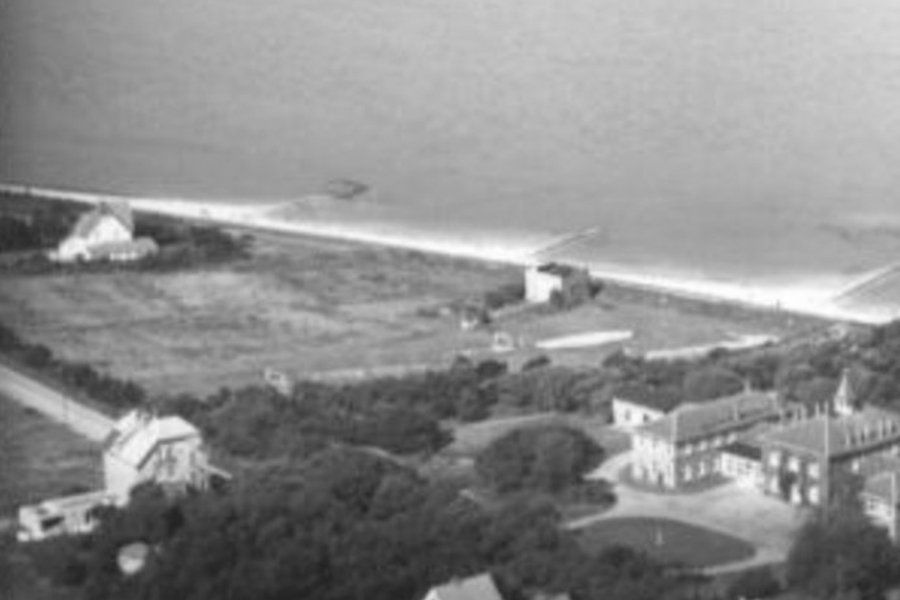
Scheinwerferstand Duhnen - Wehrbergsweg, rechts die Görne - Stiftung, links unten die Wehrburg, links oben Haus Seehütte. Foto von 1953.
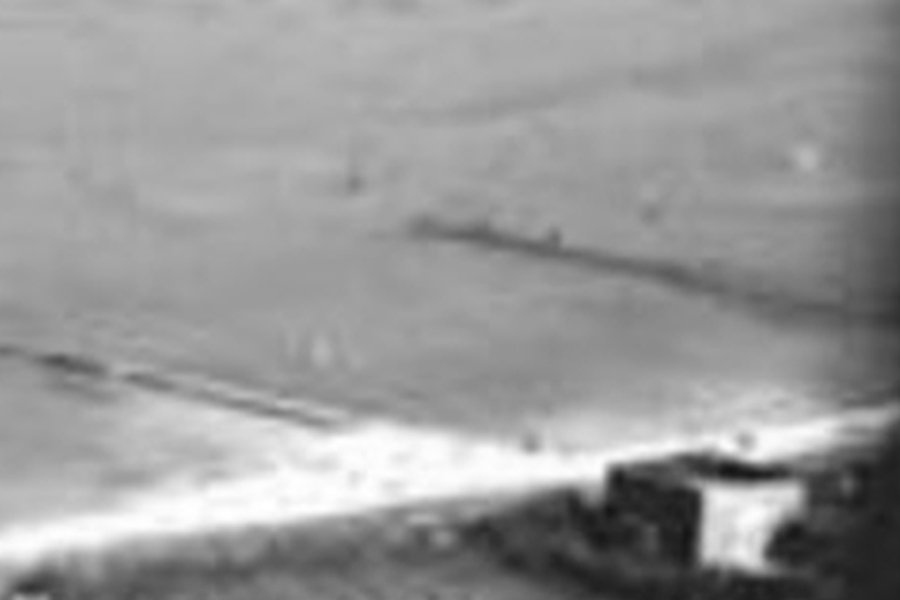
The bunker tower from a different perspective. It had to be demolished at the end of the 1960s during the planning for the new building of the seawater surf bath (now Ahoi-Bad).
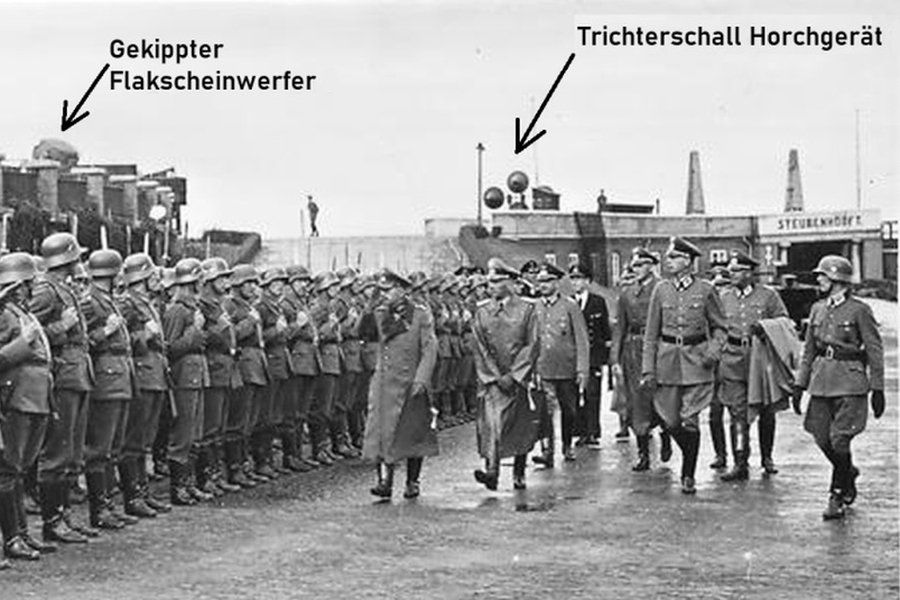
Appell an der Woltmannstraße vor dem Steubenhöft, der Grund, Zeitpunkt und die anwesenden Offiziere sind nicht bekannt. Links der nach oben gekippte 150 cm. Flakscheinwerfer, rechts das Trichterschall Horchgerät. Die ebenfalls dort befindliche leichte Flak, ist nicht zu erkennen.

A presumably 200 cm anti-aircraft searchlight - mobile. The location was on the north side of the island of Neuwerk.Source: Kurt Eisermann
Headlight position Fla 77 according to standard construction guidelines

The anti-aircraft searchlight could be mechanically lowered into the bunker.

Bomb direct hit in light group 5 (Groden - Neufeld Schantung)
On August 3, 1943, British bombers attacked the city of Hamburg with around 950 aircraft during Operation Gomorrah. During this operation, several bombs were dropped near Groden-Neufeld at 1:33 a.m. The position of the anti-aircraft searchlight there (Light Group 5) was hit directly by a bomb. Seven soldiers were killed in the incident, one survived with serious injuries. One of the victims was the soldier Franz Krobatha from Styria in Austria.




